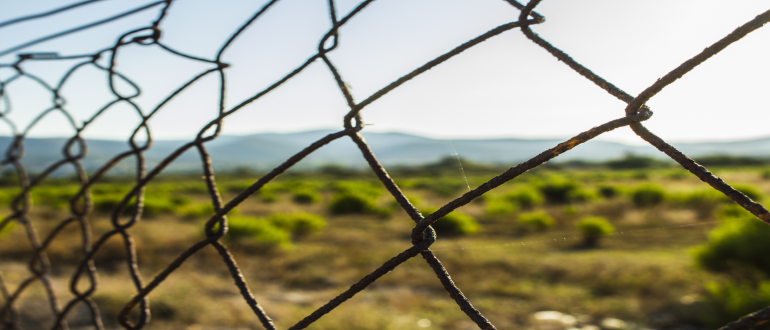
Bangladesh Plans to Relocate Rohingyas to the Remote Island of Bhasan Char
In 2015, the government of Bangladesh proposed a relocation of the displaced Rohingyas to Bhasan Char island, in the Bay of Bengal, under its Ashrayan Initiative (Bangladesh 2016). The plan emerged again in 2017 (Rahman 2017) after the exodus of more than 700,000 refugees forcedly displaced from Myanmar. This massive flow of refugees marked the turning point for the government of Bangladesh to announce its intention to move Rohingyas to the island. According to governmental officials, this relocation is due to the fact that Rohingyas are currently facing a lack of basic needs at Cox’s Bazar District (Deputy Commissioner 2019) such as access to education, security, movement restrictions or denial of citizenship and related rights and protections (OCHA 2018).
The final aim of the Ashrayan Project is to alleviate poverty of the Rohingya refugees by providing shelter and human resource development activities, thereby improving the standard of living of the people, ensuring basic education, health care and skill development on income generating activities (Bangladesh, 2016). However, even if a priori the plan can also be justified by the camps’ congestion, reality has proven to be quite different as what has been stated by Bangladesh authorities (Banerjee 2020).
After the failed attempt to repatriate Rohingyas to Myanmar in August 2019 (Banerjee 2019), in September Bangladesh imposed widespread restrictions on the conditions of life of the Rohingyas in the refugee camps, such as high-speed mobile internet ban, closure of markets or hinders to humanitarian aid (Marsh & Ahmed 2019). These constraints appear to be aimed at indirectly forcing the refugees to either return to Myanmar or move to Bhasan Char, living them with little margin of choice (Banerjee 2020). However positive governmental prognostics are, Rohingyas are unwilling to move to the island since they fear death by starvation, floods and lack of humanitarian aid (HRW 2018).
Is Bhasan Char Island an adequate destination for relocation?
Emerged from the sea in 2006, Bhasan Char is an unstable island extremely vulnerable to monsoons that does not provide the suitable environment for the development of a stable, self-sufficient community in the long term (UNHCR 2020). Considering the fact that Bangladesh is one of the most vulnerable States to sea level rises, this recently-emerged island in the Ganges Delta is even more likely to suffer from environmental catastrophes. Additionally, Bhasan Char’s isolation in the event of cyclones or other natural disasters is a matter of great concern (HRW 2020).
Investigation about the habitability of the island has not yet occurred, thus one has to rely on two opposite views. On the one hand, authorities from Bangladesh affirm that those refugees who choose to be relocated in Bhasan Char would have access to the same basic rights as those in Cox’ Bazar (Bangladesh 2016). On the other hand, several NGOs (AI 2019) as well the UNHCR have expressed the need for further discussion with the authorities on fundamental protection matters crucial to understand relocation plans, including viability of the site to offer dignified living conditions, safety and security considerations, access to food and water, voluntariness (HRW 2018) and other factors regarding freedom of movement, right to work or humanitarian access and presence (UNHCR 2020).
After the former UN Special Rapporteur on Myanmar, Yanghee Lee, visited the island, she questioned whether it was ‘truly habitable’ (UHCHR 2019). Despite the acknowledgment of the commitment to identify alternative durable solutions for Rohingya refugees, HRW claimed that governmental authorities are believed to be including individual’s names on the relocation lists without their knowledge and consent and declared any relocations must be proceeding ‘on a voluntary basis’ (HRW 2019). Refugees International also recognises that questions about safety and voluntariness of the intended relocation ‘remain unanswered’ and reiterated the need for Bangladesh to conduct independent technical and protection assessments by the UNHCR and other international actors to determine the feasibility and safety of the move (RI 2019).
Requirements for the lawful relocation of refugees
Assessment of the protection of Rohingya in Bhasan Char is crucial for the determination of the legality of the intended relocation. The UN Special Rapporteur has insisted that the intended relocation must comply with international standards of safety, voluntariness, dignity and sustainability and that the government of Bangladesh should share feasibility studies and allow the UN to carry out a full technical and humanitarian assessment before making any further pans for the move of people to the island (OHCHR 2019).
These relocation plans must fully entail the engagement and participation of refugees, including through consultation and on-site visits since without individual fully informed consent, such plans cannot move forwards. All in all, relevant information on the project to the affected refugees must be provided at all times, prior and after the intended relocation that should, indeed, be aimed at improving refugees’ conditions of life instead of creating a new crisis (UHCHR 2019).
Are these relocation plans lawful under International Law?
In light of Article 12(1) ICCPR, Rohingya refugees should enjoy the right to freely move and choose their residence and be protected against all forms of forced internal displacement. Restrictions set by Bangladesh are not within the constraints laid down in Article 12(3) ICCPR. In fact, The Human Rights Committee recognised its concerns about their relocation to the island due to its proneness to floods, the lack of necessary infrastructure to ensure respect for basic human rights and the moving ‘without the full and free consent of the affected individuals’ (UNHCR 2018).
Moreover, neither the principle of proportionality, being the relocation the appropriate and least intrusive instrument for the desired result proportionated to the interest to be protected, nor clarity or preciseness in determining the criteria have been taken into account for the development of the relocation plan to Bhasan Char. Relocation of refugees in an isolated island which is a geographically limited area, also constitutes an unlawful restriction of freedom of movement (Zieck 2018).
Consequently, this considerable degree of restriction on Rohingyas’ internal freedom of movement supposes a constraint in the conditions of life (Fine & Ypi 2016). Therefore, not only Article 12 ICCPR is affected, but also Articles 7 (Prohibition of Torture, or Other Cruel, Inhuman or Degrading Treatment or Punishment), 9 (Liberty and security of person), 17 (Right to Privacy) of the ICCPR and Articles 11 (Right to an Adequate Standard of Living) and 12 (Right to Health) ICESC.
The amount of uncertainty about the adequacy of the island, and the nature and purpose of the treatment of refugees, is putting Rohingya at unnecessary further risk and the relocation plans to move Rohingya refugees to Bhasan Char are unacceptable. Therefore, the intended relocation plans from Bangladeshi authorities are in contravention to international human rights law and must thereby be considered as unlawful. If the purpose were to find a durable solution, Bhasan Char is definitely neither durable nor a solution.
Disclaimer: The views and opinions expressed in this article are those of the author and do not necessarily reflect the opinion of IFAIR e.V. or its members.
References
Amnesty International (2019). Joint Letter: Plans to Move Rohingya Refugees to Bhasan Char Island. https://www.amnesty.org/en/documents/asa13/1382/2019/en/ Accessed: 2 December 2020
Banerjee, S. (2019). Rohingya Muslims return to “safety”: A regional approach. ORF Issue Brief No.396.
Banerjee, S. (2020). From Cox’s Bazar to Bhasan Char: An Assessment of Bangladesh’s Relocation Plan for Rohingya Refugees. ORF Issue Brief No.357.
Deputy Commissioner (2019). Interview of Md. Kamal Hossain, Cox’s Bazar (Bangladesh). Voices of America.
Fine, S. & Ypi, L. (2016). Migration in Political Theory: The Ethics of Movement and Membership. Oxford University Press, 32-56.
Government of People’s Republic of Bangladesh (2016). “Ashrayan Prakalpa”. http://www.ashrayanpmo.gov.bd/site/page/5e75d465-34fa-48a6-b1af-54b983a666d7/). Accessed: 2 December 2020
HRC (1999). General Comment No. 27: Article 12 (Freedom of Movement). https://www.refworld.org/docid/45139c394.html. Accessed: 2 December 2020
HRW (2018). ‘Bangladesh Is Not My Country’ The Plight of Rohingya Refugees from Myanmar. https://www.hrw.org/report/2018/08/05/bangladesh-not-my-country/plight-rohingya-refugees-myanmar. Accessed: 2 December 2020
HRW (2019). Joint Letter to Prime Minister Hasina on Bhasan Char. https://www.hrw.org/news/2019/11/12/joint-letter-prime-minister-hasina-bhasan-char. Accessed: 2 December 2020
HRW (2020). Bangladesh: Cyclone Endangers Rohingya on Silt Island. https://www.hrw.org/news/2020/05/20/bangladesh-cyclone-endangers-rohingya-silt-island. Accessed: 2 December 2020
Marsh, S. & Ahmed, R. (2019). ‘Our only aim is to go home’: Rohingya refugees face stark choice. The Guardian.
OHCHR (2019). End of mission statement by the Special Rapporteur on the situation of human rights in Myanmar. https://www.ohchr.org/EN/NewsEvents/Pages/DisplayNews.aspx?NewsID=24114&LangID=E. Accessed: 2 December 2020
Rahman, S. A. (2017). Plan to move Rohingya to remote island prompts fears of human catastrophe. The Guardian.
Refugees International (2019). Statement: Refugees International Warns Against Relocating Rohingya to Bhashan Char Island. https://www.refugeesinternational.org/reports/2019/3/28/refugees-international-warns-against-relocating-rohingya-to-bhashan-char-island. Accessed: 2 December 2020
UHCHR (2019). Oral statement by Ms Yanghee Lee, Special Rapporteur on the situation of human rights in Myanmar at the 40th session of the Human Rights Council. https://www.ohchr.org/en/NewsEvents/Pages/DisplayNews.aspx?NewsID=24299. Accessed: 2 December 2020
UN OCHA (2018). “Myanmar Humanitarian Brief”, 2. https://reliefweb.int/sites/reliefweb.int/files/resources/OCHA%20Myanmar%20Humanitarian%20Brief%20-%20September%202018.pdf. Accessed: 2 December 2020
UNHCR (2018), Submission on Bangladesh: 30th UPR session. https://www.refworld.org/docid/5b081ec94.html. Accessed: 2 December 2020
UNHCR (2020). 2020 Joint Response Plan Rohingya Humanitarian Crisis, 27-28. https://reporting.unhcr.org/sites/default/files/2020%20JRP%20-%20March%202020_0.pdf. Accessed: 2 December 2020
Zieck, M. (2018). Refugees and the Right to Freedom of Movement: From Flight to Return. Michigan Journal of International Law, 39(1), 85.

Sara Lopez
Sara Lopez holds a Master's degree in Public International Law from the University of Amsterdam and researches in several fields of international law such as humanitarian, criminal and human rights law. She is currently focusing on the situation of the Rohingya community in Bangladesh.
